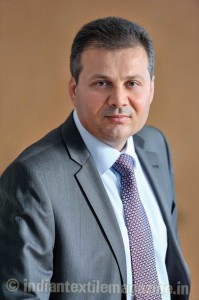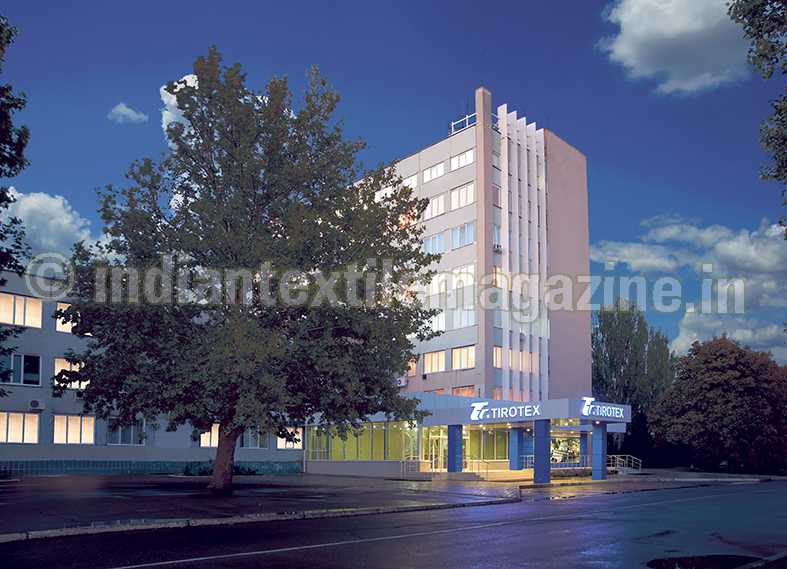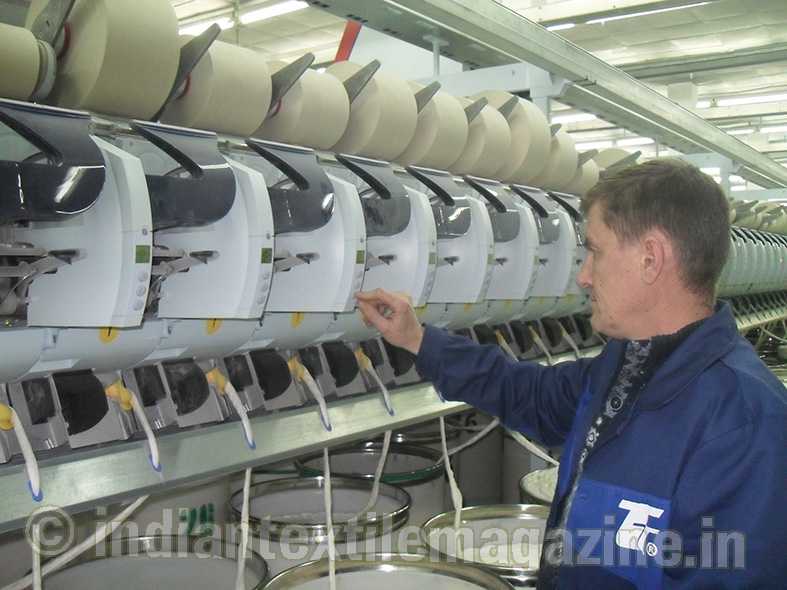Tirotex claims: “We’re spinning at 160,000 rpm!”
Tirotex, Europe’s biggest textile company, has succeeded in overturning the practical limit on rotor spinning of 150,000 rpm that has been insurmountable for over 20 years. On its Autocoro 8 rotor spinning machines from Schlafhorst, Tirotex is spinning high-quality weaving yarns for its own weaving mill at a rotor speed of 160,000 rpm. This has been made possible by the innovative singledrive technology of the Autocoro 8, which has smashed all the previously applicable productivity barriers.
Over 200 million sq. mtrs. of wovens for global market
The Tirotex textile company was established in Tiraspol, Moldova, in 1972. It is a vertically integrated manufacturer with a huge industrial complex that has a sophisticated infrastructure and its own power plant. The complex boasts its own spinning and weaving mills, dye shops, finishing plants and sewing lines, employing over 3,200 people in all.
Tirotex has invested consistently in innovative European textile machinery. The majority of its machines, which assume a key role in relation to quality and productivity, originate in Germany. The overall area of the production halls is equivalent to the size of 58 football pitches. With an annual output of over 200 million square metres of finished fabrics and wovens, Tirotex is one of the biggest textile companies in Europe. It is export-oriented, manufacturing underwear and home textiles such as bedding, tablecloths, furnishing fabrics and curtains for the global market. Tirotex supplies dyed and printed fabrics made from 100 per cent cotton or polyester-cotton blends. The attributes of its wovens meet every customer requirement: they are resistant to water, oil, dust and stains, and do not crease, pill or shrink.
The company spins all the yarns for its fabrics. It operates 27 Autocoro rotor spinning machines from Schlafhorst. Each year it processes more than 17,000 tonnes of cotton, primarily from Uzbekistan and Tadzhikistan.
In the layout of its spinning mill, maximum productivity and a guaranteed yarn quality for downstream processing in the weaving mill are the defining objectives for Tirotex, and so the company has been investing for years in highly productive rotor spinning machines from Schlafhorst. With the new Autocoro 8 Tirotex has now smashed the seemingly unassailable barrier of 150,000 rpm and has thereby increased its production by 18 per cent.
“The limit now only exists in the mind”

For over 20 years, the maximum rotor speed of 150,000 rpm was regarded as the ceiling for rotor spinning, both in practice and with regard to the technology. There were good reasons for this in practice: higher rotor speeds can result in more yarn breaks, which reduce machine productivity. The time-consuming piecing process by the travelling piecing units with their long, unproductive travelling times nullify any increase in productivity on conventional rotor spinning machines. The belt drive also comes up against a physical limit – its design means that its running precision declines at higher speeds and on longer machines. Greater wear and quality loss are the consequences. And, finally, energy consumption explodes on conventional rotor spinning machines as the speed rises – an absolute no-go issue in times of escalating energy costs.
The Autocoro 8, with its revolutionary single-drive technology, smashes these limits. Technically the innovative rotor spinning machine is designed for rotor speeds of 200,000 rpm. “The practical limit of 150,000 rpm now only exists in the mind,” says Andrey Mezhinskiy, General Director of Tirotex. “Schlafhorst long since overcame the barrier with the Autocoro 8. But no one throws out overnight a rule that has applied for over 20 years. Neither do we. Many factors come together in practice. Various key indicators should be heeded if one wishes to increase profitability and efficiency in a sustainable manner: raw materials, energy, quality. We naturally want to increase the productivity of our spinning mill, but not at any price. We have set quality standards for yarn strength, yarn elongation and yarn uniformity that must be adhered to. With the Autocoro 8’s predecessor, the Autocoro 480, we produced medium-count weaving yarns at 135,000 rpm. With the Autocoro 8 we have finally been able to crack the 150,000 rpm barrier on a daily basis. For example, we are now spinning a weaving yarn with a count of Nm 34 at 160,000 rpm.”
High-speed yarn of premium quality
The results that Tirotex achieves in daily production with the Autocoro 8 are attention-grabbing: 18 per cent more yarn with a yarn strength and elongation that are above the minimum requirements of the company’s own weaving mill and below the 25 per cent characteristic line of Uster Statistics. High-speed yarn of premium quality. The specific energy requirement per kilogram of yarn is less than one kWh – a value that is the stuff of dreams in the case of conventional, belt-driven machines, even at much lower rotor speeds.
Schlafhorst succeeded in making the breakthrough to new high-speed dimensions with a groundbreaking new machine concept. Restricting central drives were replaced on the Autocoro 8 by single-motor drives and intelligent software. Each spinning position is a production unit in itself, with autonomous spinning and winding processes. The piecing process was integrated completely into the individual spinning position, dramatically shortening piecing processes in the case of yarn breaks and on machine start-up. Frictionless magnetic rotor drives guarantee absolute reliability and safety at all speeds. Schlafhorst has thus eliminated the limits that have restricted rotor spinning for over 20 years and has opened up new prospects for the industry.
Pioneer with ambitious goals
Tirotex has certainly not broken the 150,000 rpm barrier early in continuous operation by chance. The company is a long-standing customer of Schlafhorst with many years of experience in rotor spinning. Added to this is the fact that Tirotex not only tests the quality of the yarns in its own textile laboratory, but also processes the yarns itself in its own weaving and knitting mills, and thus has ample opportunity for quality control.
“Perhaps this is why we are a little bolder and have tackled the limit sooner than others,” says Andrey Mezhinskiy. “We would spot quality problems in the weaving mill immediately.”
Tirotex regards the stage it has reached merely as an intermediate step, because 160,000 rpm is far from the limit. “Following the success achieved with the Nm 34 yarn count, we will increase the speeds for other yarns too at a controlled rate and test the new potential of the Autocoro 8 continuously,” says Andrey Mezhinskiy.
Tirotex is pursuing ambitious goals. “We are also investing specifically in productivity and efficiency in the next few years to be able to expand further in the global market in the future”, he adds.
For Tirotex, it is obvious that only the Autocoro 8 comes into question for this expansion in the spinning mill.

